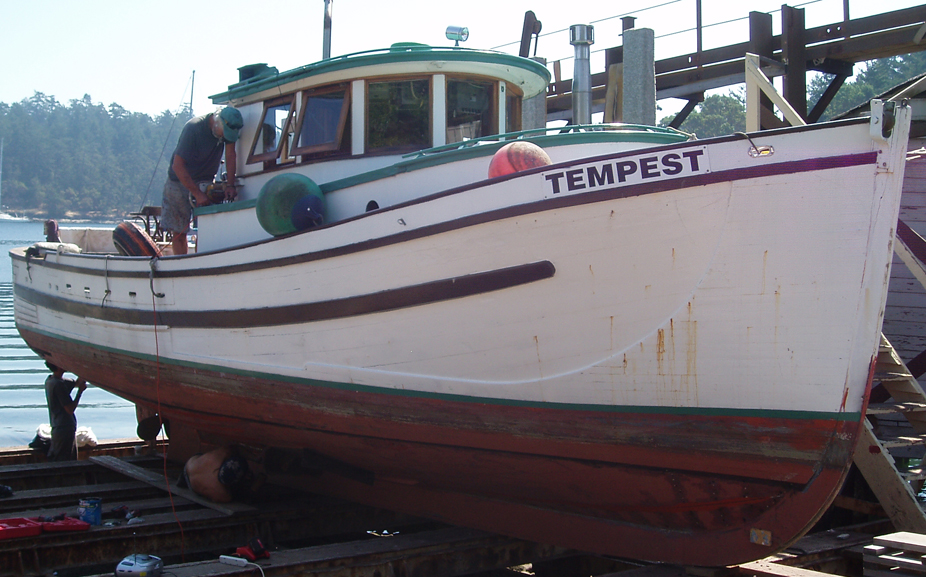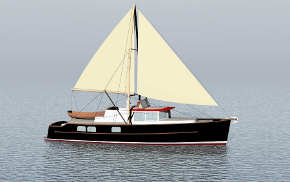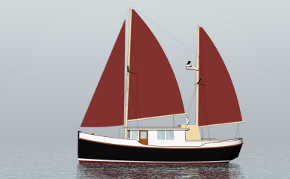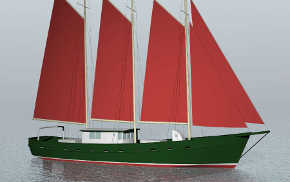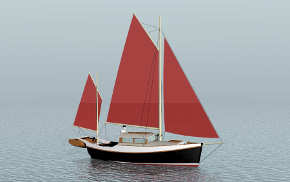Aluminum bulwarks on old wooden boats
It seems that British Columbia’s maritime history will be preserved one boat at a time. Lacking any museum or group focused solely on small craft, the work will be done by individuals within their personal (sometimes very limited) means. The results are uneven, a mix of methods with no fixed standards of preservation or restoration. But it is happening. The losses are sometimes appalling…..the recent destruction of the Hollyburn is an example……the plight of dozens (perhaps hundreds) of other significant vessels is a concern.
I see the use of aluminum upperworks on traditional wooden boats as no different than using plywood and fiberglass/epoxy. It works. The purists cringe, and I’m one of those, but if it saves another traditional BC boat and puts her back to work it’s entirely worthwhile. Anything done to a wooden boat can be un-done in future when needs or resources change. I do believe that guys like Robert Critchley in Sayward (Miss Quadra and others) and Don Macmillan in Sontula (Tanza and Pacific), rebuilding wooden boats in the way they were intended, will be seen in future as visionaries. Other parts of the world, Northern Europe and New Zealand are examples, have recognized their heritage vessels and are actively working to preserve them. Maintaining the original integrity of construction and materials is (I believe) most important in maintaining authenticity (for various reasons) and ultimate value. Not necessarily dollar value though that is important to some, but historic value. By maintaining the original intent we maintain a true artifact of a lifestyle that has almost vanished. I also know that historians want artifacts as they were used, ie seiners with the aluminum beavertail intact.
These boats are our heritage; they will last forever if maintained with very simple tools and material that’s growing all around us. Our BC mix of Scandinavian and Japanese artistry resulted in a design and construction style that is unique in the world. It is much admired, has been copied by others, and is the envy of many. Apparently many of us are willing to allow that work to be vandalized or trucked to a landfill.
Lumber is available, you might have to look a bit but it’s out there, and remember most of these boats were not built with perfect material in the first place. The skills to do the woodworking are available as well, the Silva Bay Shipyard School has trained over a hundred enthusiastic woodworkers in the past dozen years. These folks are ready to maintain a large fleet of wooden vessels, and build new ones. Our heritage vessels represent a level of craftsmanship invested in everyday tools (tugs and fishboats) that seems like a worthwhile value to encourage.
Today I was busy taking the lines and documenting the design and construction of the Tempest. Built in Annieville slough by the Vestad family in the early 1960’s., she’s approximately 35’3” by 10’2”. Retired from fishing and now used by a Denman Is owner for cruising, she’s up on the ways (Silva Bay Shipyard, Don and Vicki Mayrand) for 5 days of reefing, caulking, and refastening the stern, garboards, and all butts. The work is being done by my son James McAlister-Roberts and Trevor Webster. It’s a good chance for me to get measurements and pictures of a pretty boat. And she has painted aluminum bulwarks!
-
External Links
- Sorry, no links have been posted
